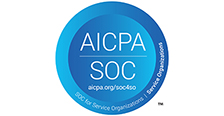
-
January 1, 1900
Unit Owners Bear Responsibility for Removing Amenities from Limited Common Elements to Allow Repair
Terry A. Kessler
Limited common elements can be a problem. The respective obligations of the unit owners and the association with respect to limited common elements are not always clear. Owners think of them as their exclusive property and often are responsible for maintenance, but associations need to be able to exercise control over them to assure proper maintenance and repair. As a result, tensions sometimes arise regarding the respective rights and obligations of unit owners and the association. However, a recent court decision has shed some light on this issue.
Limited Common Elements "Hybrids"
Under community association law, there are two primary types of ownership: (1) individual ownership of the unit, usually the interior components of the dwelling, and (2) common ownership by all unit owners collectively of the "common elements" in proportion to their respective interests as recited in the master deed or declaration. The term "common elements" can be comprised of both "general common elements" and "limited common elements." General common elements usually include the exteriors of the buildings, roofs, foundations, load bearing walls, stairs, and surrounding land, while limited common elements are those common elements which are designated by the master deed for the use of one or more specified units to the exclusion of other units, e.g., terraces, balconies, decks, and patios.
It is well settled that maintenance and repair of the unit is the responsibility of the unit owner while maintenance and repair of the general common elements falls upon the association. Limited common elements are frequently treated as hybrids. Customarily, unit owners are responsible for maintaining, at their expense, areas designated as limited common elements appurtenant to their unit, and the association is responsible for structural repairs. However, it has been unclear whether the owner or the association is responsible to remove, store and replace unit owner personal property when necessary to effect repairs to the common elements. Recently, a trial court in Bergen County issued an opinion in Greenhouse Condominium Association, Inc. v. Silverman which provides associations and homeowners some guidance on this issue.
Responsibility for Removal of Owner’s Property in Dispute
The Silvermans owned one of four penthouses located atop the high-rise Greenhouse Condominium in Cliffside Park. According to the master deed for the condominium, the Silvermans were permitted to use the adjacent terrace which is designated as a "limited common area." On the advice of a consultant, the association’s board of directors contracted to replace the entire roof of the building due to leaks and attendant damage in apartments located on the floor just beneath the roof. In addition, based upon the advice of its engineer, the association adopted weight restrictions for items installed on the roof-top terraces. The manufacturer of the new roofing material recommended that all "personal belongings" of the penthouse- unit owners that were in place on the roof terraces be removed before construction.
Accordingly, the association notified all penthouse unit owners of the pending project and asked them to remove their possessions from the terraces which included a fountain, potted trees, drift wood and a platform. However, the Silvermans refused to remove their possessions unless the association assumed the cost and responsibility to remove, store, and return the items to their original locations.
Unit Owner to Bear Cost
Relying upon the New Jersey Condominium Act, the court found that the use of the terraces was limited and that the users-here, the Silvermans -were subject to the weight restrictions imposed by the association because the association controlled all common elements. The court held that the board acted on the considered recommendation of its expert and adopted reasonable weight regulations within its business judgment. The judge also concluded that the responsibility and cost for removal of the property lay with the Silvermans; reasoning that the Silvermans, in placing these items on the rooftop terraces with or without the acquiescence of the association, did so "with the implied understanding that if called upon to facilitate repairs to the area, they would remove the possessions." Thus, their placement was at the sufferance of, and subject to, the regulations of the association.
Most notably, the court stressed that the terraces, and other similar limited common elements, were not the property of the individual penthouse owners, despite the owners’ exclusive use of them. In this case, the Silvermans did not have an individual property right in the terrace except as owners in common with all other unit owners. They therefore could not assert dominion over the limited common element; except as granted them by the provisions of the master deed and in accordance with the rules and regulations adopted by the association. Ultimately, the Silvermans, were ordered to remove their possessions from the terrace at their own cost and by their own effort.
Thus, although unit owners have the exclusive right to use their respective limited common elements, that right is not absolute. If the association needs to repair a common element and that repair requires removal, storage and return of a unit owner’s personal property located on a limited common element, the unit owner is solely responsible to arrange for, and pay for, the removal, storage and return of that property.
Terry A. Kessler is a partner in the Community Association Law Practice Group. Ms. Kessler is actively involved in the New Jersey Chapter of Community Associations Institute (CAI) as a frequent lecturer on association law.


